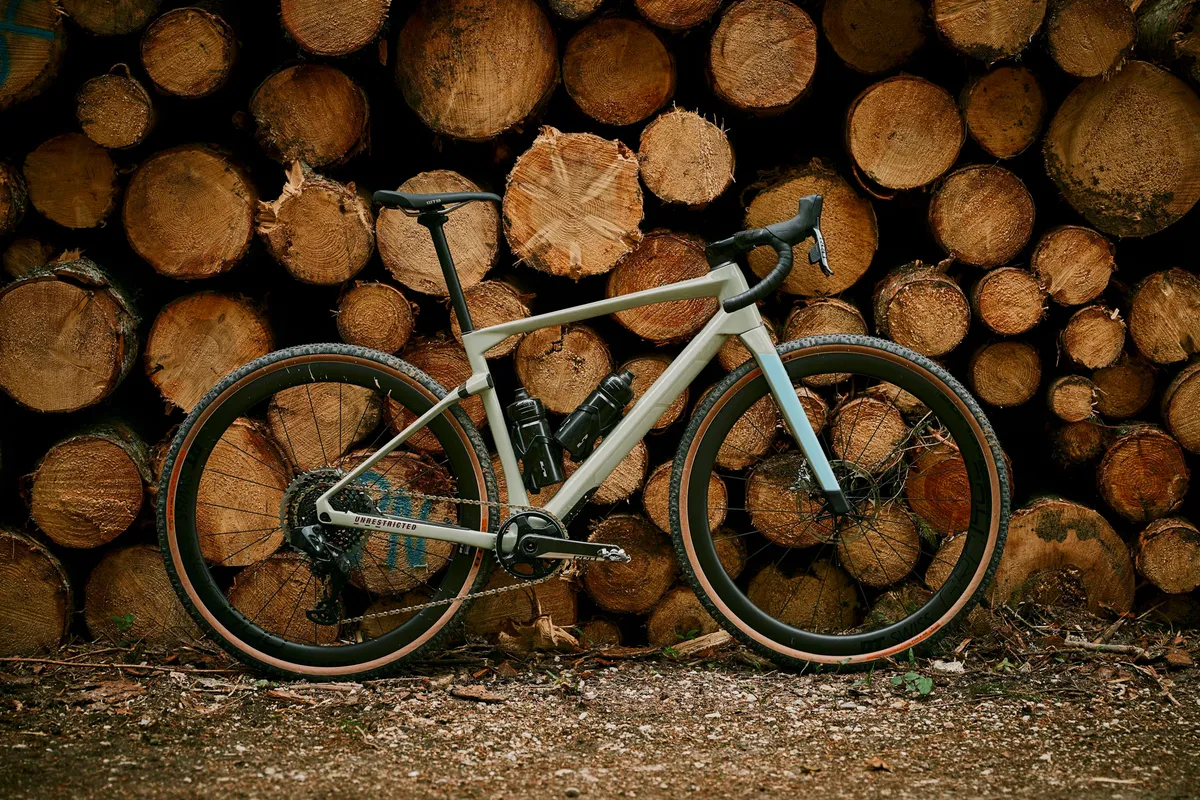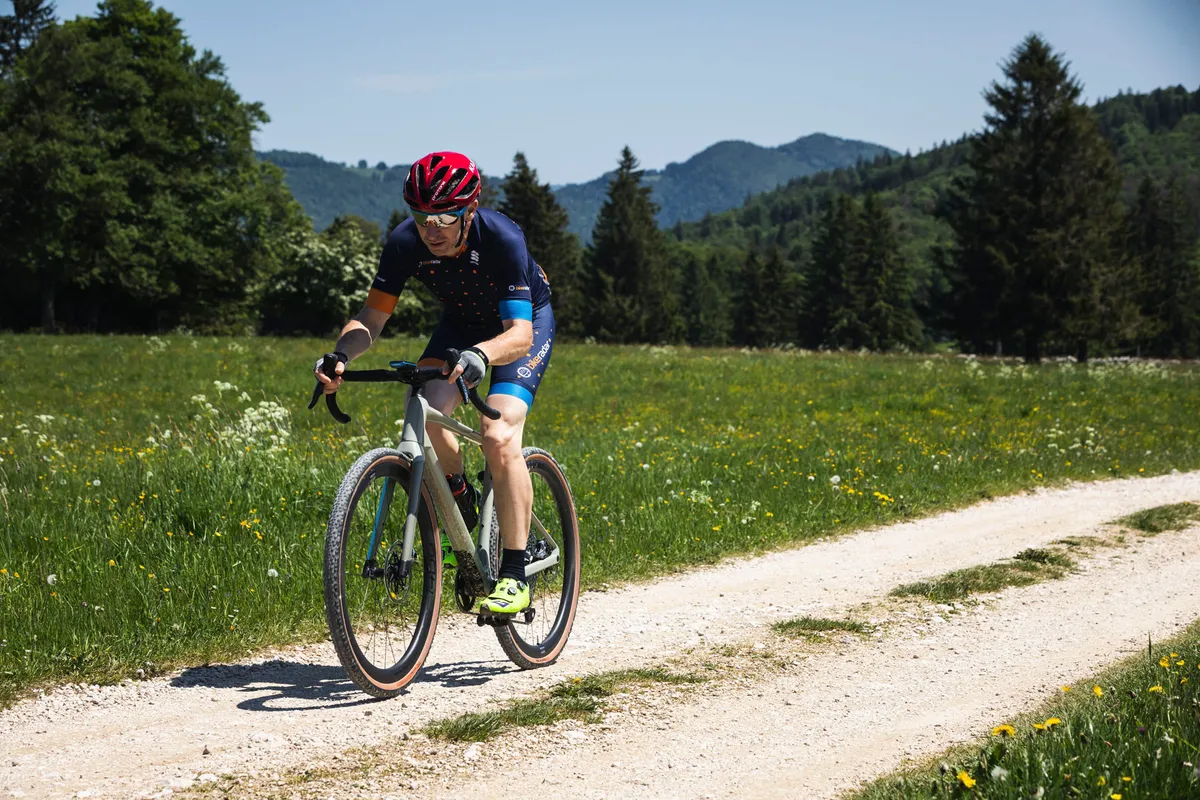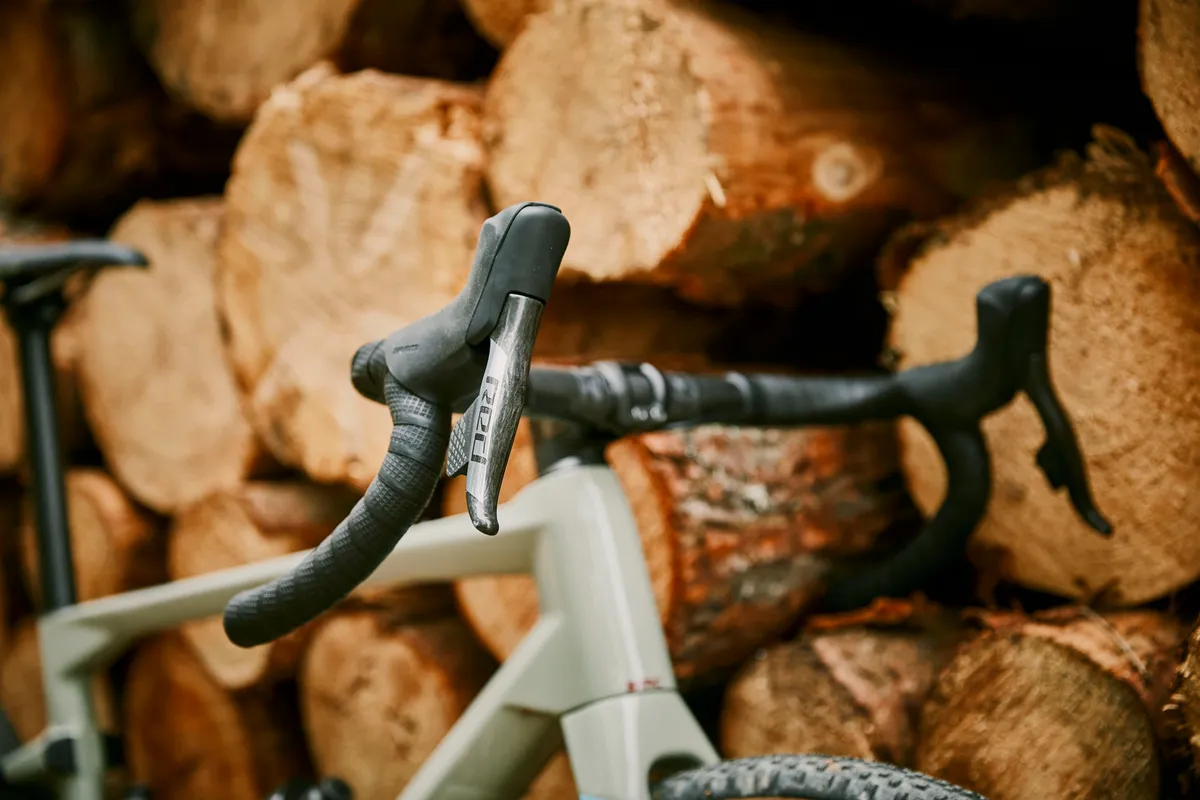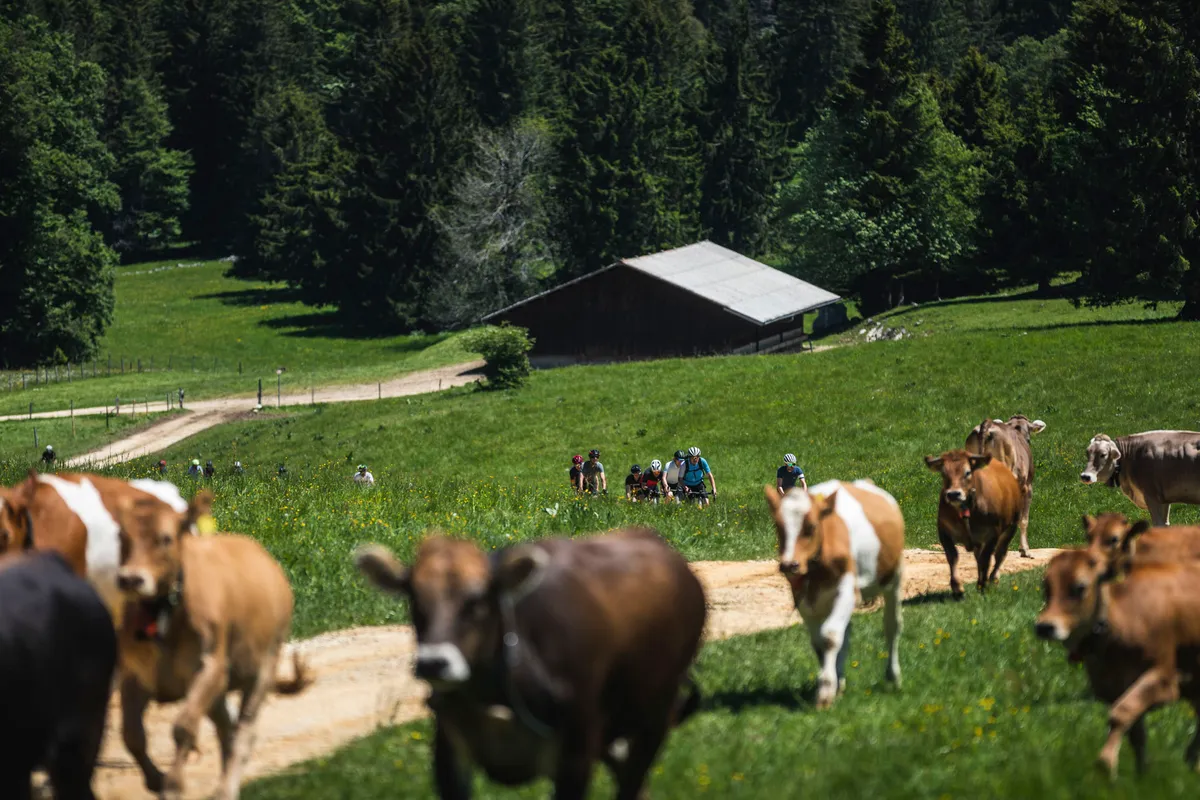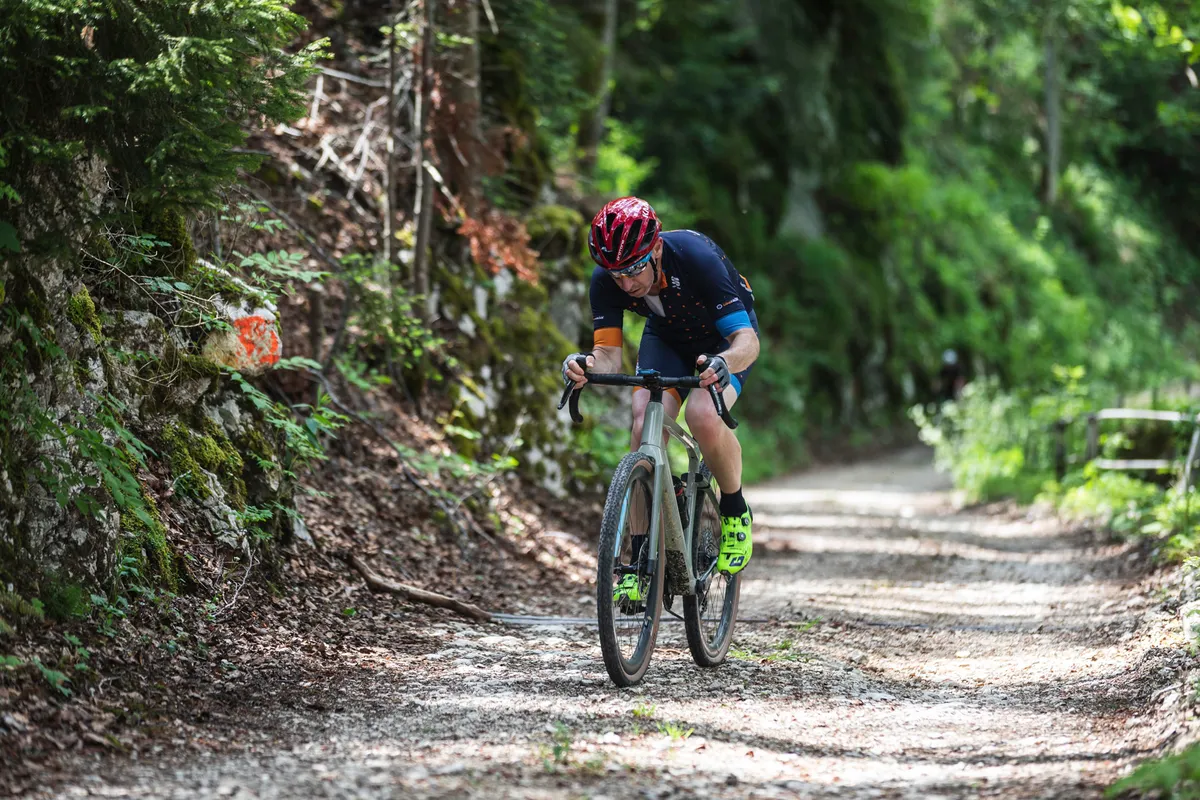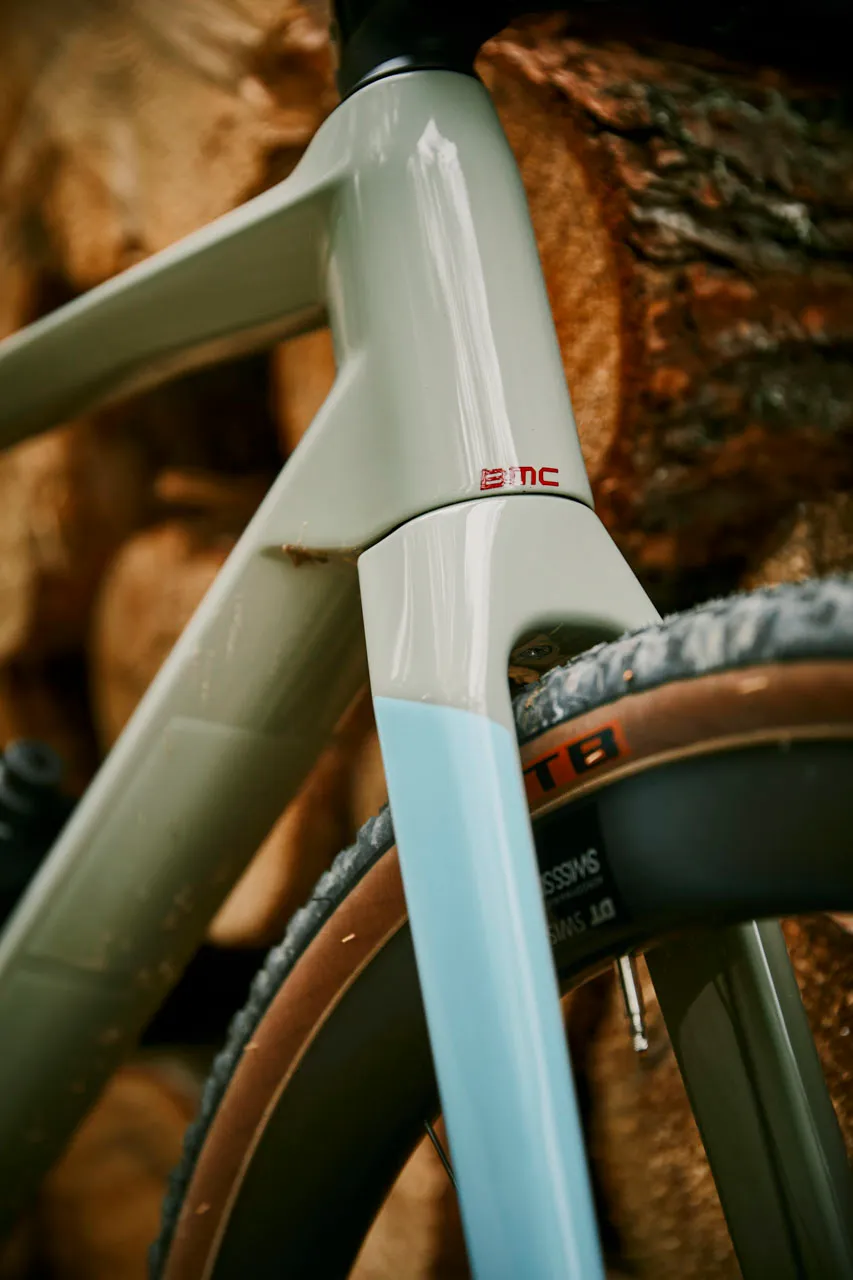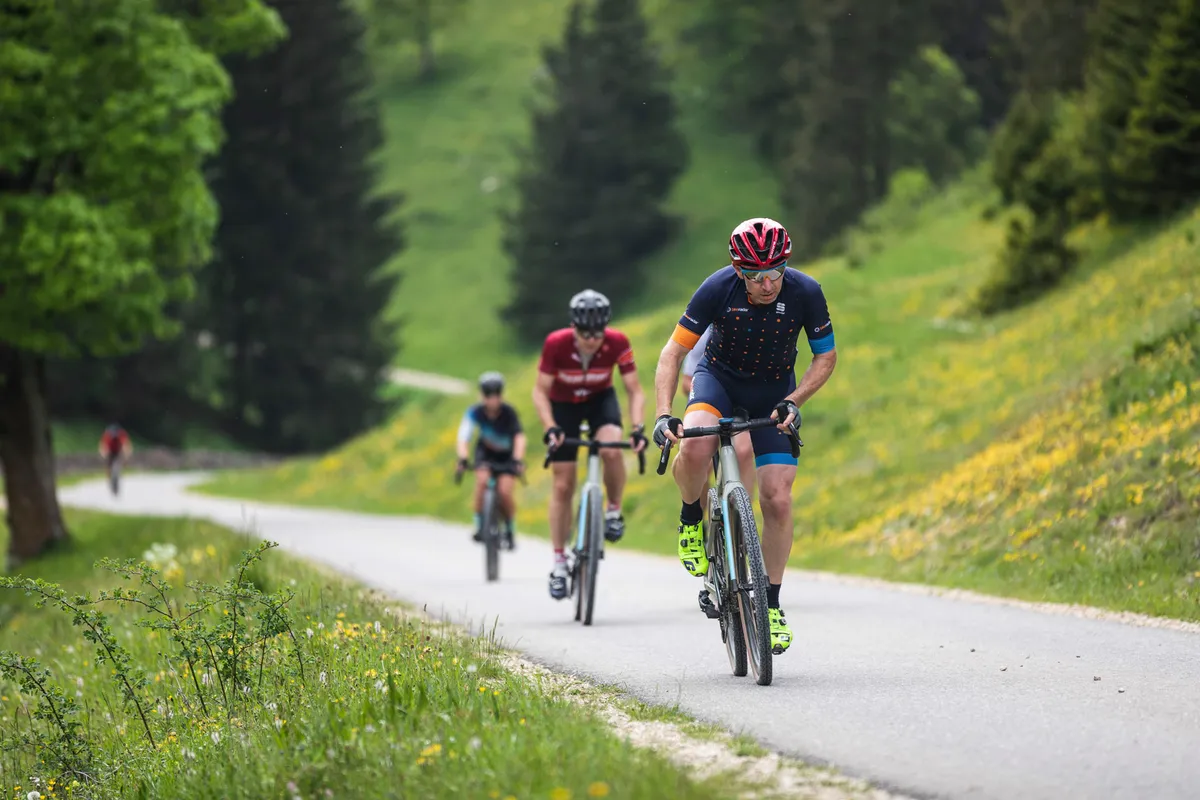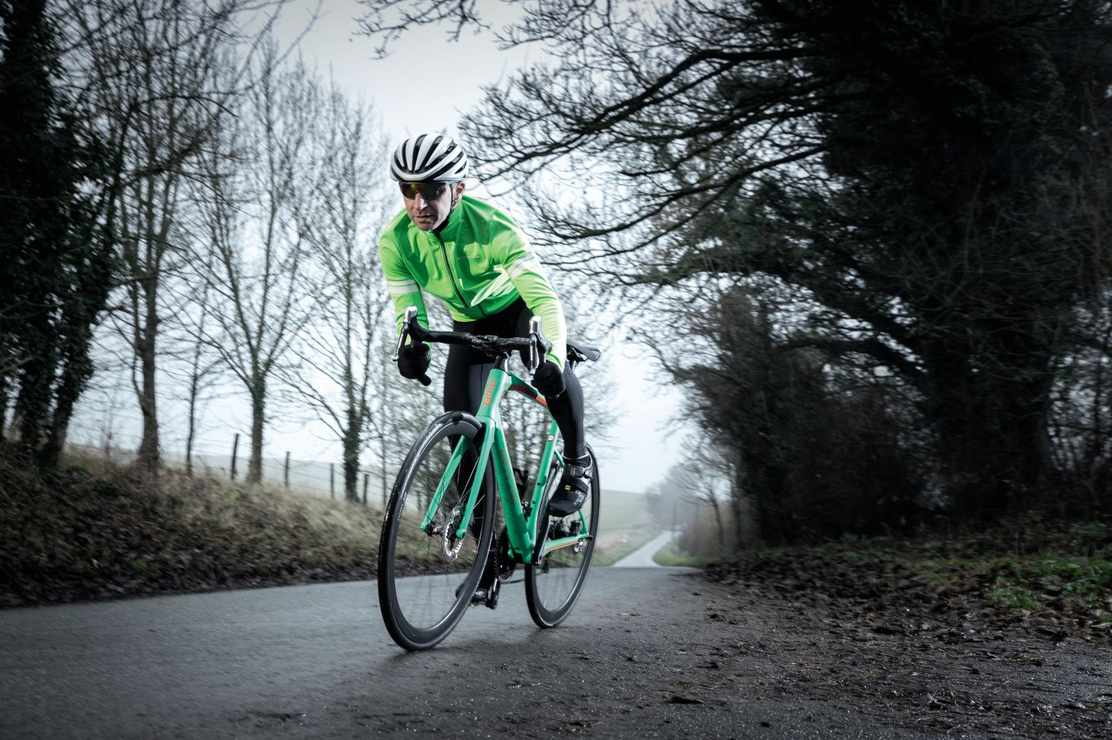As someone who began mountain biking in 1989, and still races cyclocross alongside a lot of road riding, gravel bikes have great appeal. The freedom, sense of exploration and ever-greater ability of modern all-road or gravel machines blend together much of what cycling means to me.
However, while the latest gravel bikes to emerge are often compared to early nineties MTBs, that doesn't take in to account the differences that wheel size, frame materials and today's technology can make.
A soft-tail, carbon fibre BMC URS (that's short for Unrestricted) with 700c x 45mm tyre clearance and a massive wireless shifting gear spread is a pretty exciting prospect — and a universe away from the rigid, all-metal, rim-braked, 26in wheel mountain bikes of the 1990s.
Introducing the URS
BMC's URS is its all-new gravel bike and borrows tech from the Swiss company's mountain bikes in the shape of the MTT (Micro Travel Technology) rear suspension system, as well as some neat integration.
The name URS (or Unrestricted) is a nod to the UCI's lack of regulation when it comes to gravel bike design. You can read BikeRadar's report from the URS launch for the full scoop; here I'll focus on how it rides.
There are four models available in the URS range, all featuring 1x drivetrains and carbon frames, which follow BMC's naming convention with the One, Two, Three and Four.
My test ride was on the URS One, BMC's top-of-the-range gravel model, which is priced at £8,999 / $9,499 / €8,999 / AU$11,499 with a mix of SRAM Red eTap AXS and Eagle AXS components.
Our route was within 30 minutes of BMC’s Swiss HQ, so the roads and trails were the ones that the bikes were developed on. What’s more, the revamped Roadmachine endurance bike, which now has larger tyre clearance, and URS in particular are bikes that many BMC staff choose as their daily rides.
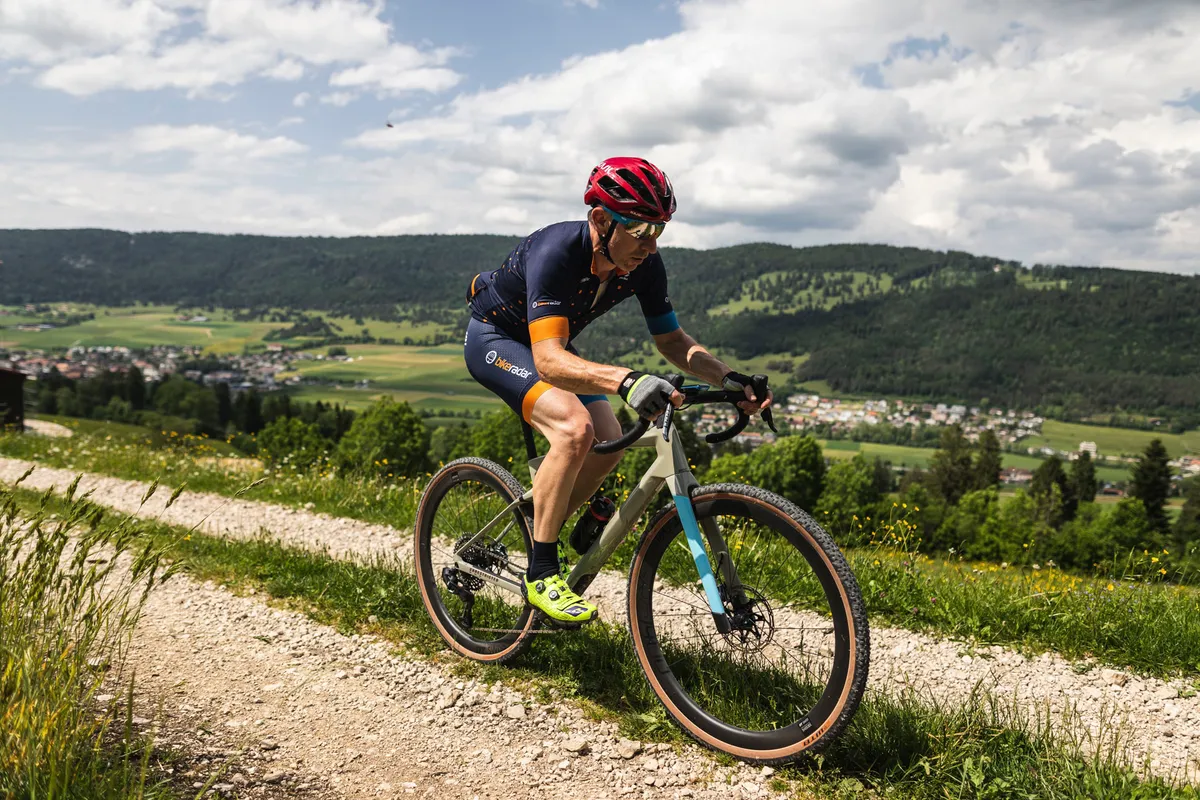
BMC URS One first ride impressions
After testing the BMC Alpenchallenge AMP Road e-bike earlier in the day I swapped to the new URS One with minimal setup time, but adhering to BMC’s advice to not drop the tubeless tyre pressures below 35psi for some later rocky stretches.
After the morning’s road ride with a 110mm stem and 72-degree head angle, the feeling of a 55mm stem and 70-degree head angle took a few minutes to adjust to on the short road section.
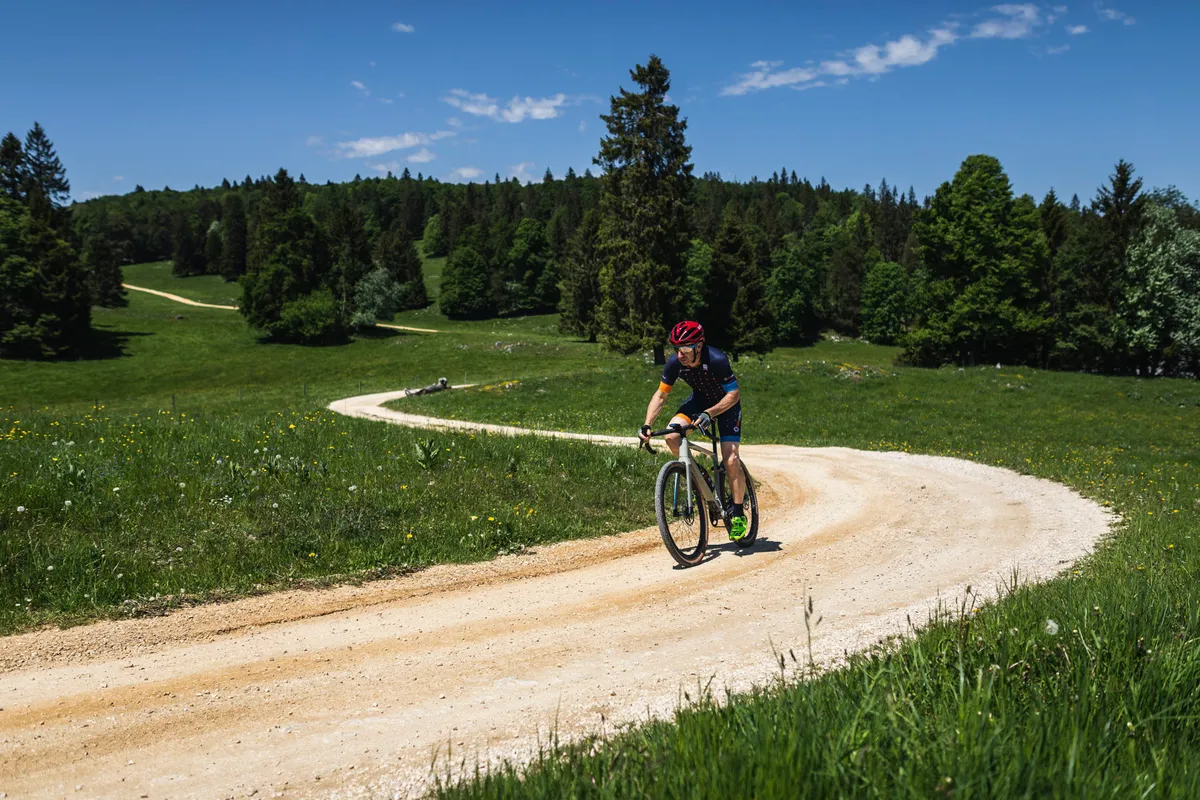
Turning on to the first double track gravel road, across a beautiful mountain meadow, was a chance to get a feel for the URS in its natural environment. But as soon as the speed picked up on a descent, the trail turned in to an unexpected pipe-laying building site for the next 500m.
Bumping and scrambling between the heaped earth and a fence, with the occasional need to carry or shoulder the bike, ruined a potentially rapid downhill but enforced how light the URS One is — BMC claims a complete bike in its lightest build is around 8.3kg, and it did indeed feel lightweight although we didn't have scales to hand.
Fitting large tyres at low pressure will have a significant effect on the ride feel of any bike. Whether that bike is designed specifically for them is another matter, but the URS combines ready-made clearance for chunky tyres (up to 45mm, according to BMC) with clever frame features.
BMC’s D-shaped seatpost has proved very effective for years on the road, because its flat back allows it to flex more readily in a defined way. Here, in conjunction with a comfy WTB saddle, 42mm WTB Resolute tyres and the MTT (Micro Travel Technology) seatstays borrowed from BMC's Teamelite XC mountain bike, the URS’s rear-end comfort is extraordinary.
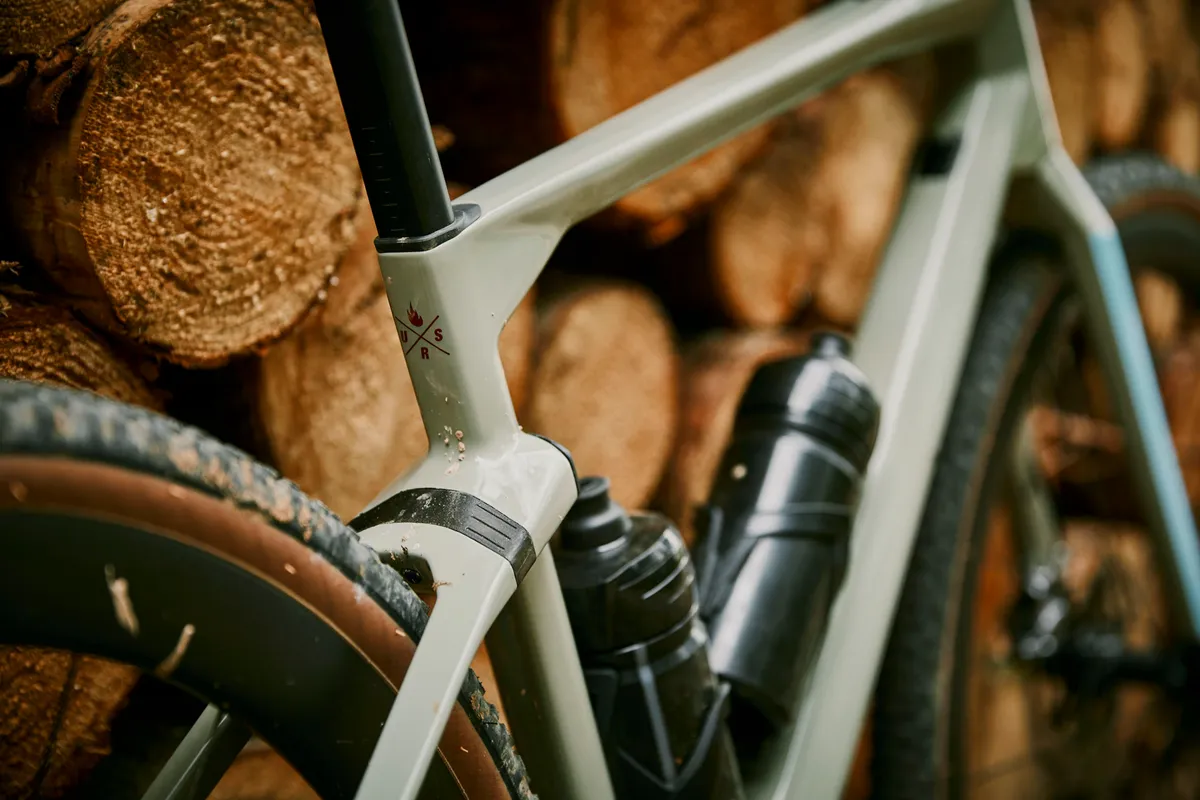
The MTT’s 10mm of suspension travel helps the rear wheel to gain more traction, while also extending your seated duration, both of which positively affect speed.
Up front, the Easton carbon bar increases the ride-smoothing ability of the carbon fork and 42mm tyre. Despite some seriously rocky sections, I didn’t experience any jarring sensations through the front-end.
BMC URS One handling
Once attuned to the feel of the short stem and relaxed angle, I found the URS to have a docile, very forgiving nature, but with snappy, sharp responses when required.
At slow speeds, the URS has great poise, confidently picking a line through technical woodland or rocky singletrack, and its stability on a lengthy 40mph dirt descent was very impressive.
That shorter position really pays off with steering precision, but even though at 178cm tall I’m near the top of its recommended 172–180cm range, I never felt cramped on my medium-sized URS, with plenty of room to work with.
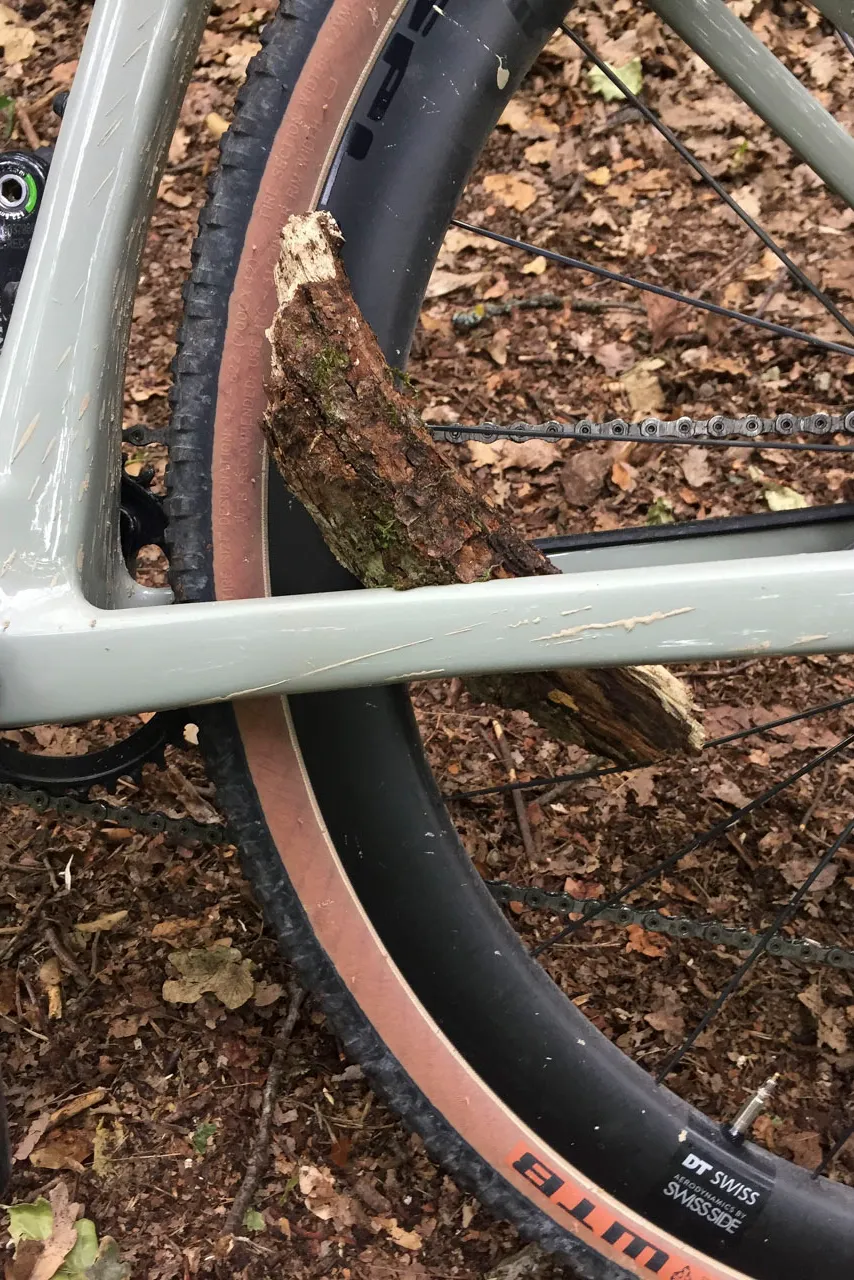
On a fast, loamy descent, my rear wheel suddenly locked up, which was briefly a little, erm, interesting, but even though my weight was pitched forwards, the URS remained utterly stable while I dangled a leg and brought things to a stop.
Despite finding a piece of large branch jammed between the frame and rear wheel, there wasn’t even a scratch on the carbon chainstay or rim.
BMC URS ONE performance
My test ride on the URS encompassed a bit of everything, from tarmac to grassland, gravel, rocks, woodland trails and man-made obstacles, and the bike breezed through it all with plenty of untapped potential.
Of course, with such a fantastic component specification on this flagship model, that may not be surprising, but they’d be less impressive without the URS’s holistic design.
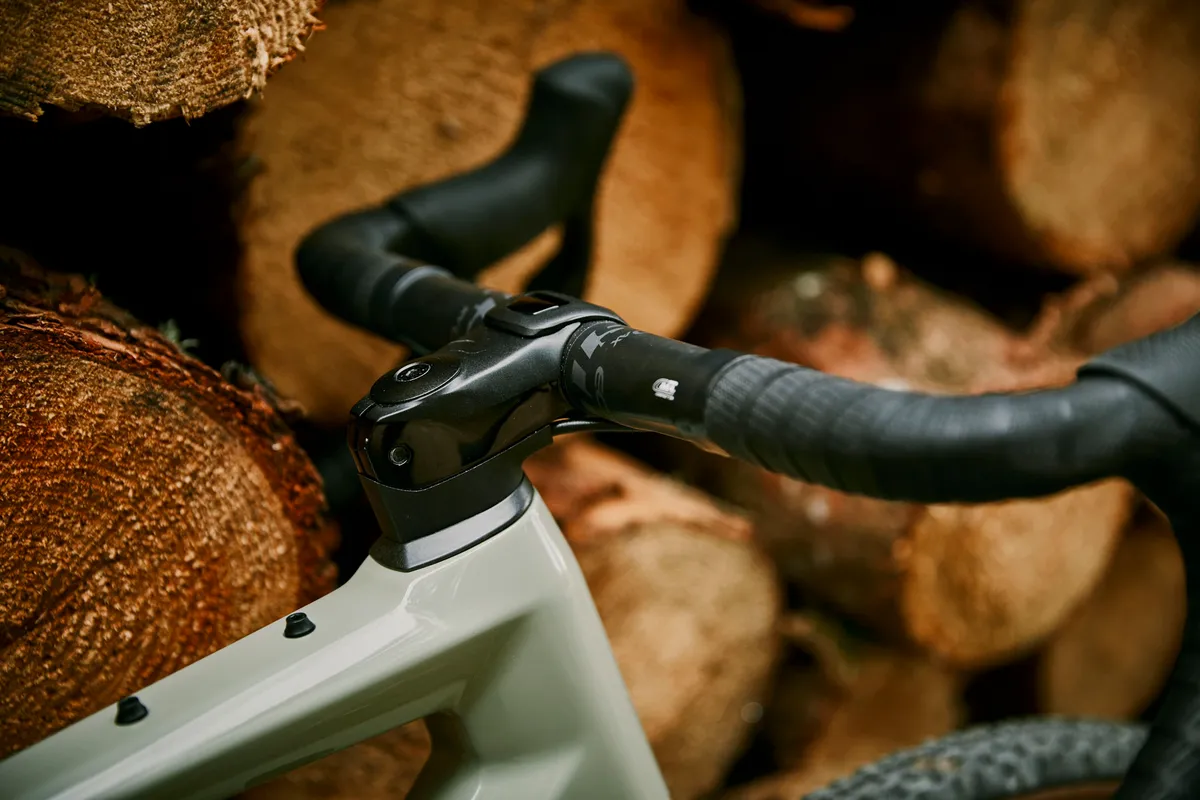
Features such as the Roadmachine-like head tube, trademark dropped seatstays, integrated stem and D-shaped seatpost, mark the URS out as unmistakably BMC - which is just as well, because the only logo on the bike is a small one at the base of the head tube.
With all of the above tuned for adventurous riding, the URS covers ground incredibly quickly, only seemingly limited by your own ability.
With mounts for full mudguards, a rear rack, three bottles and a top tube fuel bag, plus the included Dfender under saddle spray 'guard, the URS is versatile and could easily fulfil multiple roles within a rider's life. (If you’re wondering, the saddle rails are still usable with the Dfender in place, should you need more storage.)
For anyone wanting to push the envelope further, the URS is designed to accept the Fox 32 SC AX suspension fork and is 27.2mm dropper post compatible too.
BMC URS ONE drivetrain and brakes
The combination of SRAM’s Red eTap AXS wireless shifters with a single 38-tooth chainring on the Red cranks, and SRAM’s Eagle AXS wireless rear derailleur with a huge 10-50 Eagle cassette, defines the URS as a ‘mullet bike’ — all business at the front, with a party out the back.
I could argue that the party starts long before the rear end, because the URS is grin-inducing even without pedalling.
On the face of it, such a wide gear ratio spread might seem unnecessary, but on one 15 minute off-road climb, with regular 20 percent plus pitches, I found myself spinning the 38x50 lowest gear several times, and being very happy to have the option.
Pedalling at 40mph required some rapid spinning on the 38x10, but for me, the other 10 gears in between were well spaced for a comfortable cadence on all of the extremely varied terrain I covered.
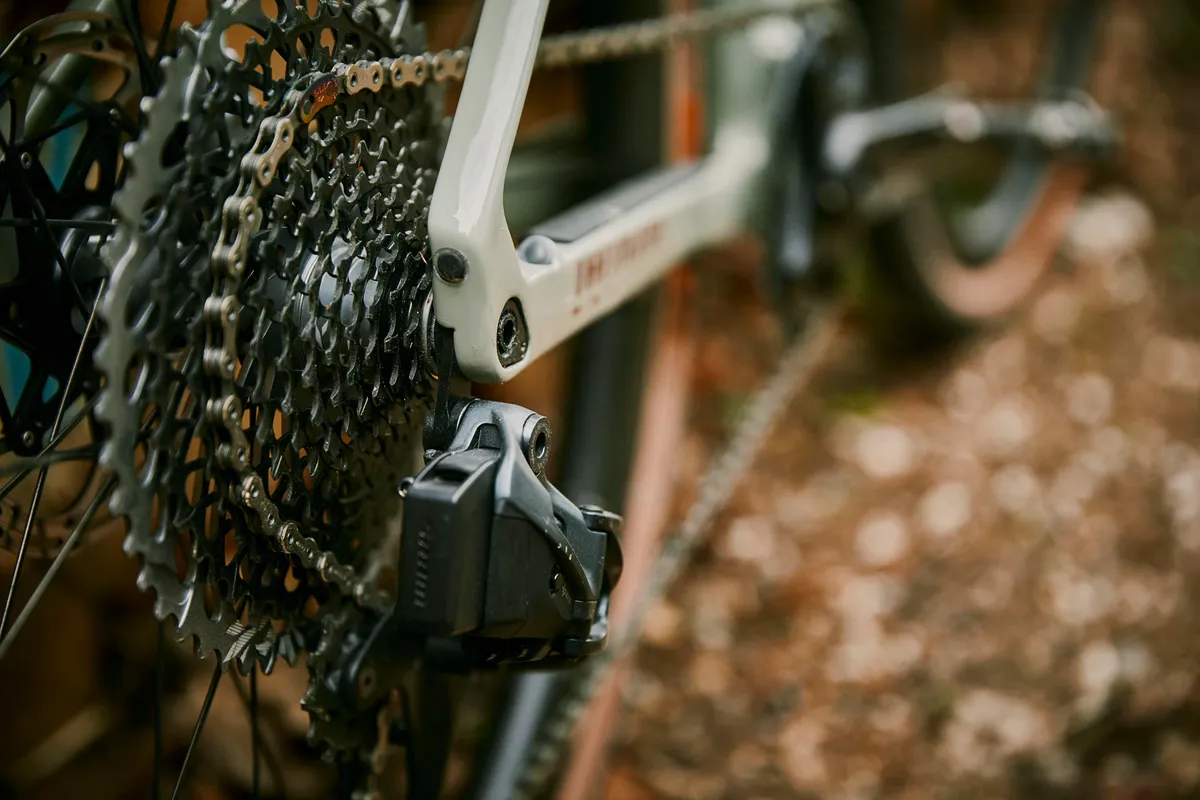
Without a front derailleur to shift, the shift paddle behind each AXS brake lever only has one job. The left side shifts inboard to larger sprockets, and the right side to the smaller sprockets.
It’s easily visualised because the chain will shift towards each lever’s side of the bike and becomes second nature in minutes. Shift speed was quick, quiet and always accurate.
The URS is specced with a 160mm rear and 180mm front disc rotor, providing superbly powerful braking control, and enough scope to easily stop a more heavily laden bike.
BMC URS ONE early verdict
In around three hours of riding, the URS One and I covered 30 miles and climbed more than 3,500ft, and I’d be lying if I said I didn’t enjoy every minute of it.
It's early days for this bike but, whether cruising on rolling gravel trails, ducking under branches on a loose wooded descent, climbing at near stalling speed or tucking in to fly downhill, the URS can stake a claim to being the most comfortable, technically proficient and universally capable all-road or gravel machine I’ve ridden.
I'm looking forward to seeing if that's still the case over the course of a longer test on home roads and trails.
BMC URS ONE specification
- Frame: URS, Micro Travel Technology, PF86 bottom bracket, Flat Mount, 12 x 142mm thru-axle 01 Premium Carbon, TCC Gravel
- Sizes: S / M / L / XL
- Size tested: M
- Fork: URS 01 Premium Carbon, Flat Mount, Integrated Cockpit, 12 x 100mm thru-axle
- Chainset: SRAM RED 1 AXS, 38t
- Cassette: SRAM XG 1295 EAGLE, 10-50t
- Chain: SRAM X01 Eagle
- Rear derailleur: SRAM XX1 EAGLE AXS
- Shifters: SRAM RED eTap AXS HRD
- Brakes: SRAM RED eTap AXS HRD, Centerline X Rotors (180/160)
- Handlebar: Easton EC70 AX
- Stem: BMC ICS 01 — Integrated Cockpit Design, with computer and camera mount
- Seatpost: URS D-Shape Carbon, 15mm offset
- Saddle: WTB SL8 Team 142
- Hubs: DT SWISS GRC 1400 SPLINE db 42, thru-axle
- Rims: DT SWISS GRC 1400 SPLINE db 42
- Tyres: WTB Resolute, 42mm
- Colour: Sand
- Note: Tubeless ready (rim strip installed, valves included), Dfender included
BMC URS ONE geometry (Based on M size)
- Rider height: 172–180cm
- Stack: 56.9cm
- Reach: 41.5cm
- Seat tube: 45.9cm
- Top tube horizontal: 57.8cm
- Head tube: 14.6cm
- Seat tube angle: 74 degrees
- Head tube angle: 70 degrees
- Chainstay: 42.5cm
- Front centre: 64.8cm
- Wheelbase: 1,064mm
- Bottom bracket drop: 6.9cm
- Fork length: 40.7cm
- Fork rake: 4.5cm
- Trail: 7.7cm
- Crank length: 17.25cm
- Stem length: 5.5cm
- Stem angle: 0 degrees
- Bar width: 42cm (16 degree flare means +68mm width at drops)
- Bar drop: 12cm
- Bar reach: 8cm
- Seatpost length: 38.1cm
- Seatpost offset: 0
- Standover height: 77.8cm
